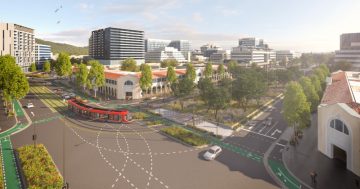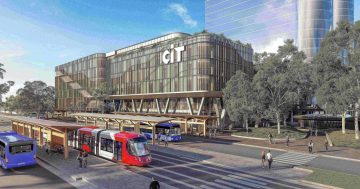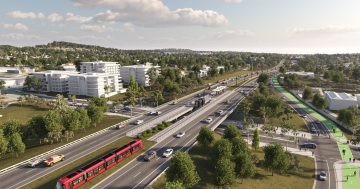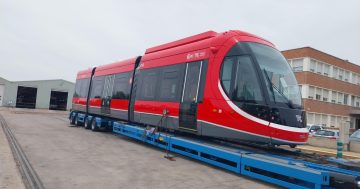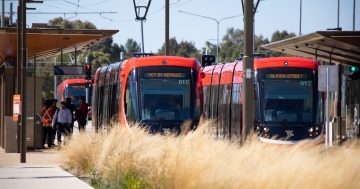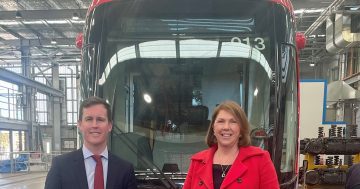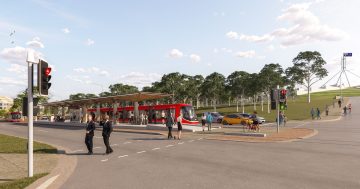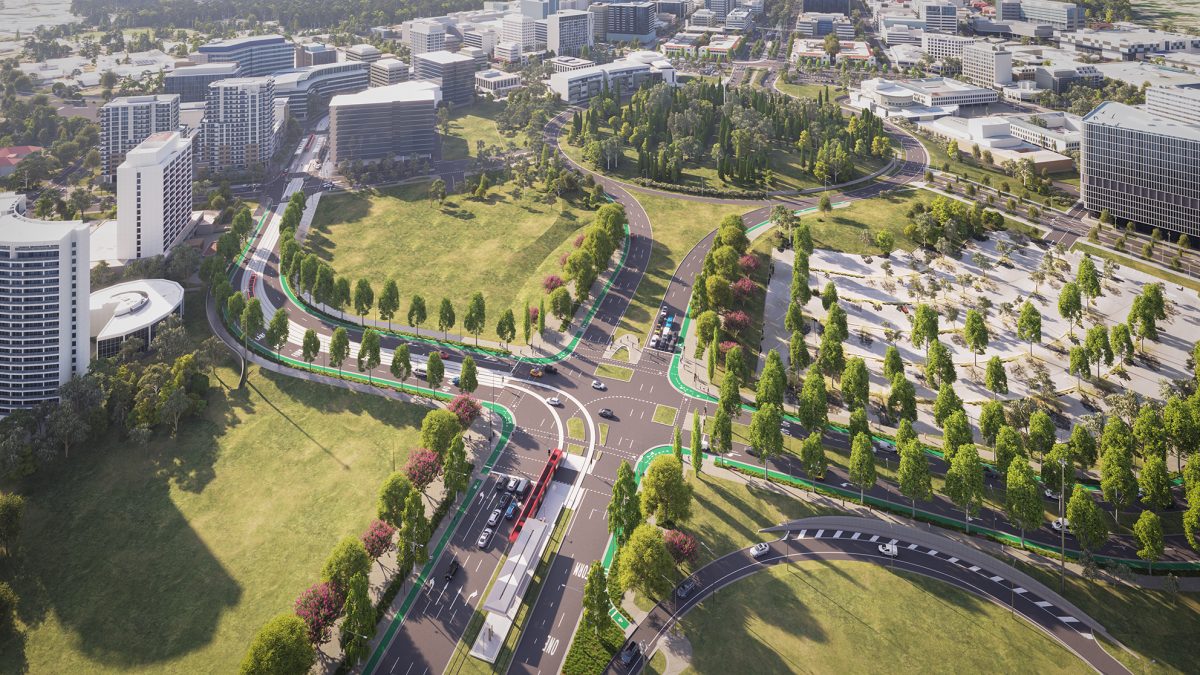
An artist’s impression of an overhead view of light rail stage 2A. Photo: ACT Government.
Plans for extending light rail from the city to Commonwealth Park are heading toward the pointy end with Work and Development Applications lodged. Now the hunt is on for a consultant to arm the government with its own project cost for when it goes into final contract negotiations with the Canberra Metro consortium.
It means Canberrans may know just how much the light rail stage 2A will cost late in 2023 when a contract is expected to be clinched.
As work ramps up on the raising of London Circuit to pave the way for light rail stage 2A, the ACT Government has released a tender for a consultant to prepare cost estimates for the expansion of the existing light rail network and support Major Projects Canberra with the assessment of the light rail stage 2A proposal.
The tender document says Major Projects Canberra has asked Canberra Metro for its proposal and costing to extend the light rail network through City West to Commonwealth Park, involving 1.7 km of track and three additional stops.
It says Canberra Metro’s proposal is expected at the end of June and the government hopes to sign a contract in late 2023.
The consultant will be critical to this, providing capital cost estimates to compare against Capital Metro’s costings, assessing the light rail operator’s proposal and advising Major Projects Canberra.
An MPC spokesperson said the expected timeframes for the receipt of the proposal from Canberra Metro and contract signing were subject to commercial negotiations and receiving the necessary planning approvals.
In December 2022, a Light Rail Stage 2A Works Approval (WA) was submitted to the National Capital Authority (NCA) and a development application (DA) to the ACT Planning and Land Authority (ACTPLA) for approval.
“The Works Approval is expected to be released by the NCA for public exhibition and community consultation in the near future,” the spokesperson said.
“Canberrans will be provided with updated information on the costs of stage 2A once commercially sensitive negotiations have finished and contracts are signed.”
Pending approvals, construction on light rail stage 2A would commence soon after the two-year raising London Circuit project was complete.
According to the tender document, the consultant will assist MPC in evaluating Capital Metro’s proposal, including how it compares with the rates and costs of similar projects and whether it represents value for money, is a reasonable representation of the construction cost of the works and is in line with MPC’s requirements.
On 2 December, the government closed London Circuit between Edinburgh Avenue and Constitution Avenue, including the permanent closure of the two western cloverleaf ramps leading into the city, to begin reshaping the southern entry to the city to accommodate light rail.
It was described as the start of the most significant change to the road network in central Canberra since the 1960s, designed to raise London Circuit to the same height as Commonwealth Avenue so stage 2A of light rail has a clear passage to Commonwealth Park and then eventually as stage 2B across the lake to Woden.
Light rail will again be a key election issue with the Canberra Liberals dropping their support for extending the network beyond Commonwealth Park.
They acknowledge work is too far advanced to stop stage 2A, but have decided to pursue a bus-only public transport system, although they are yet to announce a detailed alternative plan.
The Liberals have long been critical of the government for not saying how much the next stages of light rail to Woden will cost. But the government has always said it could not show its hand ahead of contract negotiations.













